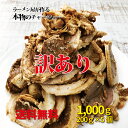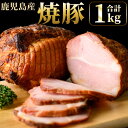The chashu I'm making is extremely simple.
First, sear the surface of the pork well, then simmer it in soy sauce that's been diluted two or three times. This should take about an hour and a half to two hours. Use aluminum foil to create a drop-lid.
You can also add the green part of the onions or ginger, depending on your preference.

[rakuten:f462161-hioki:10000476:detail]
[rakuten:marushige12:10000019:detail]
久しぶり (Hisashiburi): This is a common Japanese phrase that means "it's been a while" or "long time no see". It's often used when you haven't seen someone or done something for a long time.
鹿児島 (Kagoshima): Kagoshima is a city in Kyushu, the southernmost of Japan's main islands. It's known for its active stratovolcano, Sakurajima, hot springs, and historic sites.
ラーメン (Ramen): Ramen is a popular noodle soup dish in Japan. It consists of Chinese-style wheat noodles served in a meat or fish-based broth, often flavored with soy sauce or miso, and uses toppings such as sliced pork, dried seaweed, and green onions.
とんこつ (Tonkotsu): Tonkotsu is a type of ramen broth made from pork bones. The bones are boiled for a long time until they break down, releasing their marrow into the broth and giving it a creamy consistency and rich flavor.
しょうゆ (Shoyu): Shoyu is the Japanese word for soy sauce. It's a condiment made from a fermented paste of soybeans, roasted grain, brine, and Aspergillus oryzae or Aspergillus sojae molds.
チャーシュー (Chashu): Chashu is a dish made of fatty pork belly that's been braised until tender, then sliced and served on top of ramen.
豚肉 (Butaniku): This is the Japanese word for pork, which is a common ingredient in many Japanese dishes, including ramen.
表面 (Hyomen): This word means "surface" in Japanese. In cooking, it often refers to the outermost layer of a food item.
焼く (Yaku): This is a Japanese verb that means "to grill" or "to roast". It's often used in the context of cooking.
醤油 (Shoyu): This is the Japanese word for soy sauce, a common condiment used in many Asian cuisines.
煮る (Niru): This Japanese verb means "to boil" or "to simmer". It's often used in the context of cooking.
アルミホイル (Arumihoiru): This is the Japanese term for aluminum foil, a common kitchen item used for cooking and food storage.
落としぶた (Otoshibuta): An otoshibuta is a type of drop-lid used in Japanese cooking. It's smaller than the pot and sits directly on top of the food to ensure even heating and prevent the loss of heat and moisture.
好み (Konomi): This word means "preference" or "liking" in Japanese. In the context of cooking, it often refers to personal taste preferences.
ネギ (Negi): Negi is a type of long onion similar to leeks or scallions. It's commonly used in Japanese cuisine.
青い部分 (Aoi bubun): This phrase means "the green part". In the context of cooking, it often refers to the green part of vegetables like onions or leeks.
生姜 (Shoga): This is the Japanese word for ginger, a common ingredient in many Asian dishes.




